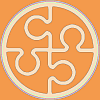Q. Has the Archbishop of Anglicanism considered the impact of traffic signals as contained in the Highway Code and how this is likely to affect those organisations of the Anglican Communion and to which the Church of England contributes members and support?
109
Traffic light signals and traffic signs. You MUST obey all traffic light signals (see 'Light signals controlling traffic') and traffic signs giving orders, including temporary signals and signs (see 'Signs giving orders', 'Warning signs', 'Direction signs'). Make sure you know, understand and act on all other traffic and information signs and road markings (see 'Signs giving orders', 'Warning signs', 'Direction signs', 'Information signs', 'Road markings' and 'Vehicle markings').
[Laws RTA 1988 sect 36 & TSRGD regs 10, 15, 16, 25, 26, 27, 28, 29, 36, 38 & 40]
The Archbishops consider that Anglican Communion personnel are jointly affected when in the UK regarding the Highway Code contents; and read the Highway Code to state that traffic lights indicate which actions should be taken and not taken, and so advise that vehicle drivers should know what actions various signs suggest and how to respond in each particular case. The matter is the same broadly, that is for other information signs and road markings, specifically warning signs, directions signs, information signs, road markings and vehicle markings. As ever it is the totality of what one does that matters, not just in what is indicated but in how it is indicated, in the complete liturgical experience of driving a vehicle.
Q. Given that Anglican sounding of horns no longer represents the width of opinion currently held by loyal drivers of vehicles regarding horn sounding, will the House of Bishops review the value of the Church of England’s continued participation in such activity or the value of the use of the horn when driving along the road.
112
The horn. Use only while your vehicle is moving and you need to warn other road users of your presence. Never sound your horn aggressively. You MUST NOT use your horn
* while stationary on the road
* when driving in a built-up area between the hours of 11.30 pm and 7.00 am
The House of Bishops is aware that horns are sounded for various reasons from a variety of vehicles, including saying hello to the local parish priest as he walks on the pavement going about his daily business. We advise parish priests to be less 'jumpy' about this practice.
The advice necessarily is that the horn is an instrument of a moving vehicle, and is only an indication of real presence. Use of the horn is a matter of delicate and deliberate reasonable action, and the bishops of course advise against any form of aggression. They discussed that assertion is different from aggression. One can be assertive even while being defensive, and one should perhaps always drive in a defensive manner. The bishops further suggest a practice that relates to church bells in most locations, that the horn is not used between the hours of 11 pm and 7:30 am in areas of denser collections of buildings.
The advice necessarily is that the horn is an instrument of a moving vehicle, and is only an indication of real presence. Use of the horn is a matter of delicate and deliberate reasonable action, and the bishops of course advise against any form of aggression. They discussed that assertion is different from aggression. One can be assertive even while being defensive, and one should perhaps always drive in a defensive manner. The bishops further suggest a practice that relates to church bells in most locations, that the horn is not used between the hours of 11 pm and 7:30 am in areas of denser collections of buildings.
Do the Archbishops and other bishops ever have recourse to flashing their lights when driving?
110
Flashing headlights. Only flash your headlights to let other road users know that you are there. Do not flash your headlights to convey any other message or intimidate other road users.
111
Never assume that flashing headlights is a signal inviting you to proceed. Use your own judgement and proceed carefully.
The House of Bishops discussed this matter with the Archbishops present. They are aware of the informal use of headlight flashing, such as that which indicates to another driver that they may proceed first in a situation where two vehicles are gathered. There are also other uses, such as in red light areas in order to make signals to service providers, being different from uses in green light areas. However, the bishops remind everyone that it is canonical that headlights are used rather like the horn, in order to indicate real presence and during liturgically correct ordinary vehicle movement. For those receiving headlight information, other users should never assume a headlight flash is a permission to proceed in any direction. Meanwhile the bishops warn that the use of headlights as a mode of aggression is entirely unAnglican. Bishops remind everyone that sidelights and rear registration plate lights are lit for journeys to and from evensong when these occur after the sun has set, and for morning prayers where these occur before the sun has risen. Strangely, the use of headlights in street lit areas appears to be optional, but would advise against switching headlights off and on again.
113
You MUST
* ensure all sidelights and rear registration plate lights are lit between sunset and sunrise
* use headlights at night, except on a road which has lit street lighting. These roads are generally restricted to a speed limit of 30 mph (48 km/h) unless otherwise specified
* use headlights when visibility is seriously reduced (see Rule 226)
Night (the hours of darkness) is defined as the period between half an hour after sunset and half an hour before sunrise).



No comments:
Post a Comment